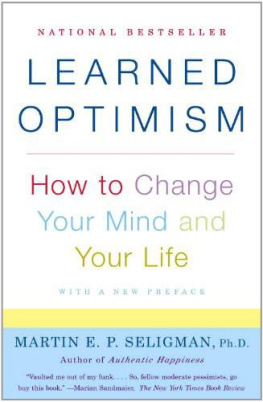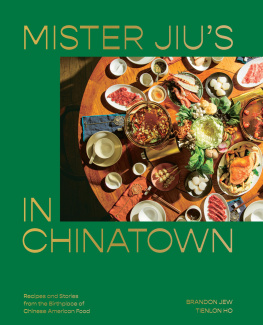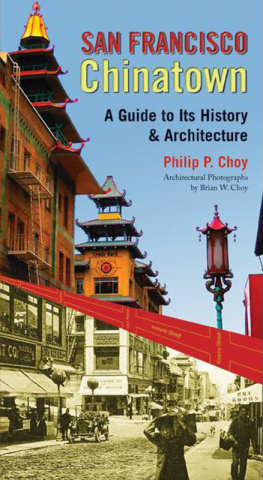Copyright 2016 by Scott D. Seligman
Penguin supports copyright. Copyright fuels creativity, encourages diverse voices, promotes free speech, and creates a vibrant culture. Thank you for buying an authorized edition of this book and for complying with copyright laws by not reproducing, scanning, or distributing any part of it in any form without permission. You are supporting writers and allowing Penguin to continue to publish books for every reader.
INTRODUCTION
Nothing had worked. Not threats, not negotiations. Not shutting down Chinatowns gambling halls and opium dens nor exiling its unmarried white women. Not house-to-house searches for weapons nor arrests. Not throwing Chinese offenders into prison nor even executing them. The situation seemed hopeless and out of control, and the New York County district attorney, Joab H. Banton, was running out of ideas.
Despite his best efforts, tong men in New York were still killing one another.
There had been reason for hope. The most recent treaty, signed five months earlier in March 1925 by the tong kingpins, was supposed to have provided for lasting peace between the On Leongs and Hip Sings in all parts of the United States. Senior tong men not seen in public for months had emerged from their hiding places, newly confident they would not be mown down on the streets of the Chinese quarter by an enemy gunman. But like the seemingly endless series of peace accords negotiated over the three decades in which the tongs had been at each others throats, this one hadnt lasted.
Distrust ran so high that any incident could prove incendiary. When a Boston On Leong decided a Hip Sing had been too attentive to his wife, he picked up his gun, and so did tong men throughout the East and the Midwest. Dozens of Chinese were slaughtered.
Bantons predecessors had been able to sit the heads of the New York tongs down together and read them the riot act with some expectation that calm would be restored if and when they willed it. But over the previous couple of decades, the organizations had spread out to dozens of cities, most of the founders had passed from the scene, and lesser men had filled their shoes. Because the bosses had not authorized the most recent outbreak, it was far from clear that they had the stature or the clout to stop it. And the stakes had never been higher: more people were dying as the weapons of choice evolved from hatchets and meat cleavers to pistols, automatic weapons, and even bombs.
On September 8, Banton assembled the leaders of the warring factions to deliver a final ultimatum. If the killing didnt cease, he warned, he was prepared to call in the federal government. It was no empty threat: Federal officials had already vowed to deport imprisoned tong men after their sentences were up. They were now poised to up the ante. And so when two Hip Sings were brutally assassinated the very next dayone shot, another bashed in the skullWashington decided it was time for drastic action.
The U.S. attorney Emory R. Buckner announced that four federal departments would cooperate to deport every Chinese in New York who lacked a certificate permitting him or her to remain in America. Because securing certificates hinged on ones ability to demonstrate that one had entered the country legally, Buckner knew that many couldnt qualify; they were out of status and vulnerable. Never mind that there was no evidence that these were the people who were wielding the guns or that their expulsion would do much of anything to bring peace to Chinatown.
In raids carried out over several days, local police imposed a dragnet as federal agents swooped in on Chinatown. They rounded up everyone they could find who looked Chinese, some of whom were citizens and most of whom were legal residents. Without warrants, they raided restaurants, gambling houses, laundries, theaters, tenements, and shops. They dragged people from their beds. If wiping out the scourge meant running roughshod over individual rights and playing fast and loose with the law, they proved alarmingly eager to step up.
Detainees by the hundreds were ferried by paddy wagon to the Federal Building, where they were herded into a large room and examined through interpreters, one by one, by immigration officers in impromptu hearings. Those with papers were released. Those without documents were placed under arrest, arraigned, and sent to the Tombslower Manhattans jailor to Ellis Island. Men who had never brandished a weapon in their lives wept as they were held without bail to await certain deportation.
No other immigrant group had ever been targeted the way the authorities were going after the Chinese. Italian and Irish migrs had fought their share of brutal gang wars, but nobody had ever rounded them up for wholesale expulsion. Yet this time, the government was acting as if the only way to bring peace to Chinatown was to get rid of its Chinese, through whatever means necessary.
How it came to this is the story of four bloody wars and countless skirmishes fought intermittently over more than three decades in New Yorks Chinatown and the Chinese quarters of several other cities in Americas East and Midwest, with their attendant casualties, peace parleys, and treaties. It is the story of a clash of mismatched cultures, of misunderstandings, navet, and bigotry. It tells of stubborn men willing to fight and die not only for concrete rewards like money and property but also for intangibles like loyalty and facethat Asian notion so closely tied to reputation, dignity, and prestige. And it is the story of a veritable army of precinct captains, detectives, and uniformed officers bound and determined to stop them.
Or at least to line their pockets.
The warriors were men from south China, most of whom had come to the West Coast to seek their fortunes and eventually headed east, but who planned to return home at some future date. Most were manual laborers, but some built businesses, amassed substantial wealth, and planted roots in America. The tongs were their secret, sworn brotherhoods organized ostensibly for social purposes but very much involved in criminal activity. (The Chinese term carries no negative connotation and can be used to describe any of a variety of organizations, but for claritys sake its use in this book will generally be limited to those secret societies.) Their weapons were cleavers and knives, then guns, and eventually explosives. And their primary battleground in New York was a triangular parcel of land not much larger than an acre adjoining the seedy Five Points neighborhood of lower Manhattan. Bounded by Mott and Pell streets, Chatham Square, and the Bowery, and including the whole of crooked Doyers Street, it was thenand remains todaythe heart of New Yorks Chinatown.
In my many years of living and working in China, studying the Chinese language, and doing research on early Chinese American history, I had heard frequent mention of the tong wars, but most of what I had read about the tongs was highly sensationalized, as indeed was much of what was written about all Chinese in America before about thirty years ago. Many writers were more interested in conjuring up Oriental mystery and lurid intrigue than presenting real history, because that is what most people wanted and expected to read.


















